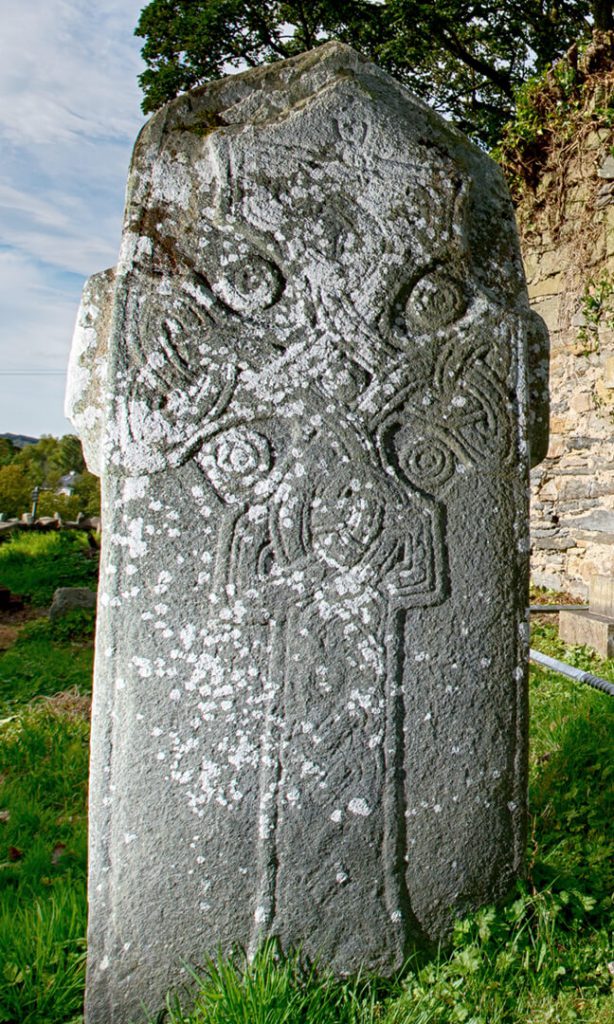FAHAN MONASTIC SITE
This site in the village of Fahan, Co. Donegal was founded in the late 6th century by the first abbot St. Mura. The monastery thrived, becoming a seat of learning and culture. Unfortunately like most Irish monasteries, it was sacked by the Vikings in the 10th century and again in the 13th century, when it was abandoned. A later monastery was destroyed in the 16th century and today the ruins of a 17th-century church surrounded by a walled graveyard are all that remains.
MURA CROSS
The 7th century Cross Slab known as the Mura Cross is said to mark St. Mura’s resting place. It measures 1.98 metres high. A Greek inscription on the northern edge of the Cross Slab shows evidence of the educational sophistication of the monks. It read “Glory and Honour to the Father and the Son and the Holy Spirit” which comes from the Council of Toledo of 633.
Both sides of the Cross Slab feature intertwined ribbon knotwork representing versions of the Tree of Life. With its roots on the earth and its branches high in the air it represented the connection between heaven and earth. The seasonal cycles of the tree links it with growth, death and rebirth. Formed in the shape of a cross it blends Celtic and Christian symbolism. The west face which has the more elaborate tree of life also features two figures similar in style to those on the Donagh Cross, Carndonagh. They are thought to represent either pilgrims or possibly Saint Mura and Áed Uaridnach ( High King of Ireland). Macalister discovered what he considered to be additional inscriptions both above the two figures, and on their robes but was unable to decipher them, their meaning lost to the ravages of time.
We have taking inspiration from the east face of this unusual Cross Slab for our pendants.



